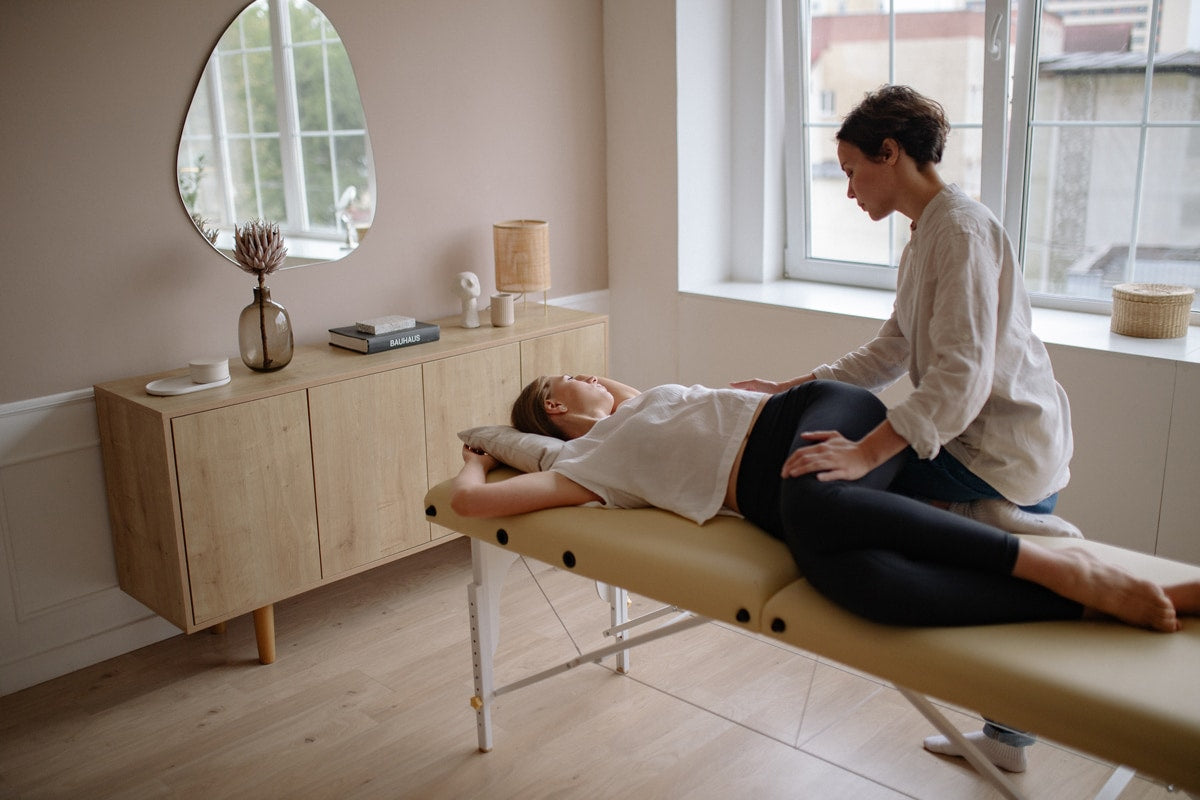It is a personal failing of mine that I don’t monitor my phone very carefully, so I wasn’t surprised to find that I had missed another call, but this was a call I’m sorry to have missed. The message went like this:
“Hi Turner. It's Renatta from Montreal. Just to let you know, I am always sitting on your chair and the benefits are phenomenal! Hope to talk to you soon. Bye.”
I hadn’t heard from Renatta for a year and a pandemic, so I was delighted to hear her sounding healthy and chipper as ever, because, well, the pandemic. And she’s well into her 80’s.
I met Renatta a few years ago when she and her much younger boyfriend made the two hour drive from Montreal to our Burlington warehouse to try out one of our active chairs. Renatta immediately loved the feeling of active sitting and took one of our chairs home with her. And it wasn’t but a few weeks later that they visited us again. It turns out that Renatta is an artist, and she couldn’t abide the drab black polypropylene seat that we’d been using for the seats on our chairs. So, she cajoled her boyfriend, a master upholsterer, into covering the seat of her chair, and she couldn’t wait to share this upgrade with me. Our Ariel’s seat has quite a complex geometry, so her upholsterer friend’s design gave us a big head start creating the seat cover that now graces all our Ariel chairs.
This kind of spontaneous contribution to our active sitting project has actually been the source of many of the design features of our chairs. Folks who love sitting actively seem to love making active sitting even better, and our little startup has been the happy recipient of many such insights.
Renatta’s call also reminded me that we’ve got a number of older folks, some well into their 80’s, who love our chairs. I was at first a little anxious when residents of a local retirement community started buying our chairs, fearing that their balance or reflexes might make active sitting a challenge for them, perhaps even a risk. But over the years I’ve become convinced that age is no disqualifier. Indeed, I’ve come to think that the constant rebalancing required while sitting actively may actually help people retain, and perhaps regain, their native balance in daily activities.
This is a much more important topic than it might at first seem, because falls are a big risk for older Americans. About a third of community-dwellers over the age of 65 fall each year. While most falls don’t result in serious injury, about 30% of such falls require medical attention.1 Fractures are common, because osteoporosis is ubiquitous in this age group. And, because older people are over 15% of our population, the total medical cost of falls is immense, over $50 billion dollars each year; the 200,000 hip fractures that occur each year contribute $10 billion, with other injuries and long-term care adding to the cost. Perhaps more ominously, a third of elderly patients die within a year of sustaining a hip fracture, and most never regain their pre-fracture level of walking. Despite the success of modern trauma care, prevention is the better medicine.
A good deal of research has tried to find ways of reducing the grim toll of falls. An early attempt to equip nursing home residents with underwear that included inflatable crash bags2 proved unworkable in practice, because no one wanted to wear such unfashionable undergarments. More recently, Tai Chi has been shown to reliably reduce the number of falls in older community residents3, and the authors of this study speculate that improvements in balance and strength in the Tai Chi group were responsible for reducing falls in this group.
Like Tai Chi, active sitting also strengthens core muscles and continuously exercises one’s ability to balance elegantly in gravity. So, we might guess that active sitting could be similarly helpful to older, fall prone folks. But this is just a guess until someone writes a grant and carefully studies the question. Until then I think it’s reasonable just to keep checking in with Renatta and our many other enthusiastic, octogenarian early adopters of active sitting; I think they may have a lot to teach us all about living well and staying well.





Leave a comment
All comments are moderated before being published.
This site is protected by reCAPTCHA and the Google Privacy Policy and Terms of Service apply.